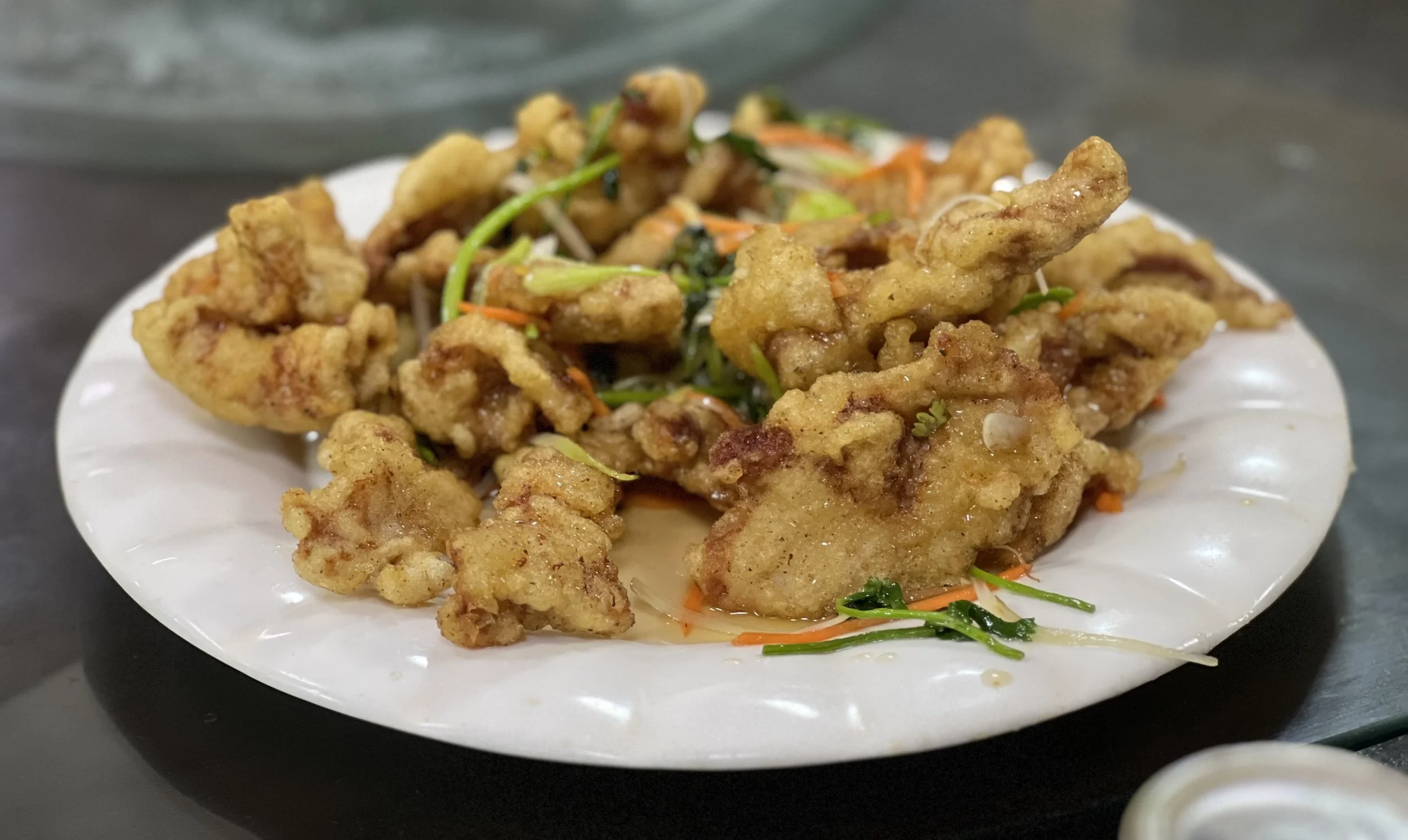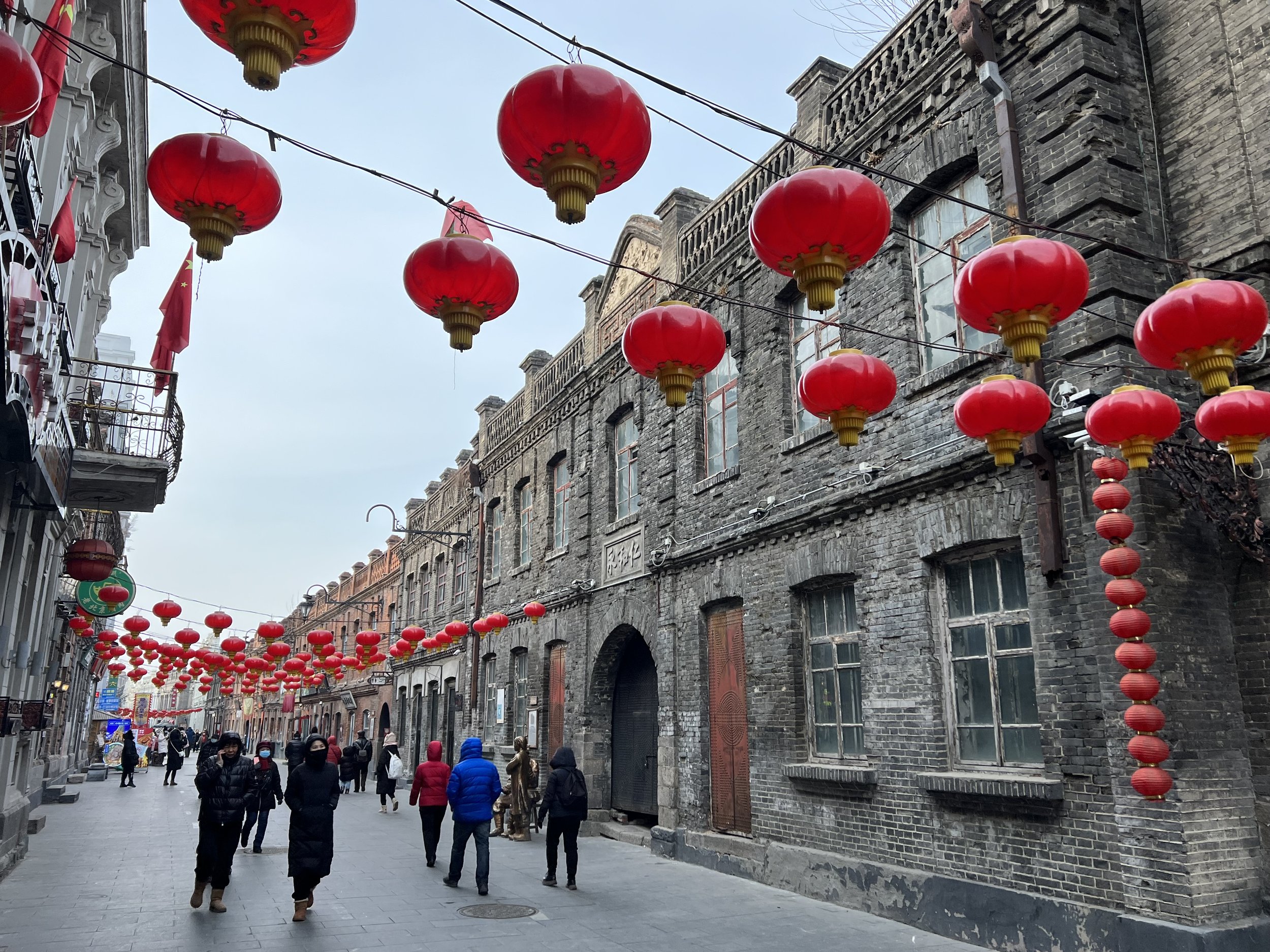Harbin Eats: Guobao Rou, Borscht, and Cityscapes
I had eaten a ton for breakfast and lunch at the Daoli market, but of course there were still many things to try!
For dinner, I came to this restaurant Lao Song Bin 老松滨 a few blocks south of the People’s Square 人民广场subway station at 159 Hongzhuan Road (红专街 159号).
Inside it was hopping, but I got a seat pretty quickly because I was just one person, and sat at a big round table with other people.
One of the main dishes I wanted to have in Harbin was this dish, Guobao Pork (锅包肉). I learned of this dish for the first time in the Korean drama “What’s Wrong with Secretary Kim” of all places! It was a favorite, special occasion dish of the characters on the series. And it’s one of the specialties of Harbin.
It’s basically breaded and fried pork with a sweet and sour sauce. Yes! Sweet and sour pork does indeed exist in China, in more than one form. Another sweet and sour pork is the lychee pork of Fuzhou.
Here, the pork was fried to a crunchy sturdiness, letting it stand up to the thin, vinegary sauce which was quite refreshing and just the right touch of sweetness to balance the fried-ness. Some cilantro and scallion and carrot gave it an aromatic quality. It was quite delicious!
Another dish that I really wanted to have in Harbin was Di San Xian 地三鲜。Now, this dish I was familiar with for a while now, having had it in Cincinnati for the first time, of all places. It’s eggplant, potato, and peppers, individually fried and then stir-fried together. I’ve made it before myself, and it’s kind of a pain with all of the frying. And it can be quite oily too. Harbin is known for this dish, and it was quite good. Huge portion size in this restaurant, so I brought both dishes back to the hotel in to-go containers, and then back to Shanghai the next day! The coating on the pork was sturdy enough to withstand this journey and being reheated in the toaster the next day.
It was fun sitting at a table with other people because I could see what they ordered. Here’s the server cutting up a sweet and sour fish with two plates. I did wish I could have shared dishes with other people, so I could try more things. One thing this restaurant is known for are the mantou 馒头, but each order comes with many mantou, too many for one person!
Since I saw the main sights of Harbin my first day, my second day in town I spent buying their famous bread and sausages (which I’ll write about later) and walking around.
Some neighborhoods really felt like another country. These kinds of buildings kind of reminded me of some parts of New York City.
Major icicles going on.
Bright (fake) flowers in this kind of run-down area.
A store of just packaging.
A street with building electrical components.
Massive, impersonal residential buildings.
This was a redeveloped area that I finally reached after a lot of walking. Besides Central Street 中央街, ths was another kind of tourist neighborhood, Lao Dao Wai 老道外。
Eventually after all of that walking, I reached my lunch location for my second day: Zhang Fei Meat 张飞扒肉。Google Translate says 扒肉 is grilled meat, but it seems more like it’s braised.
I came pretty late for lunch past 3pm, so I could easily find a table. They had a whole wall about their history.
I actually really wanted to try the borscht, a vestige of the Russian influence in Harbin. Shanghai cuisine also claims a version of borscht because of the influences of the international settlements. Shanghai calls borscht Luo Song Soup 罗宋汤, while here it is called Su Bo Soup 苏伯汤.
Besides the borscht, I had the restaurant’s signature dish, the “grilled meat” 扒肉。 It was very tender!
I ended up taking back to Shanghai an order of meatballs and tofu which I didn’t have any room in my stomach for.
Lots of eating to be done in Harbin!





